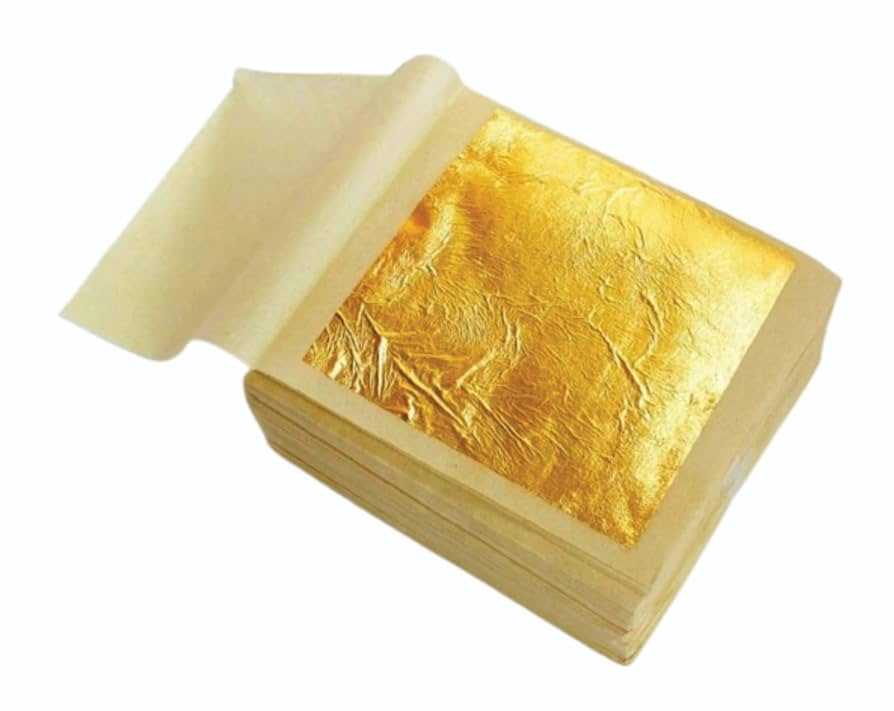Table of Contents
- Exploring the Allure of Golden Painting Techniques
- Incorporating Gold Leaf in Modern Artistry
- The Symbolism Behind Gold in Fine Arts
- Tips for Maintaining and Preserving Golden Paintings
- Q&A
- Concluding Remarks


Exploring the Allure of Golden Painting Techniques
Golden painting techniques have enchanted artists for centuries, offering a radiant, ethereal quality to their work. The use of gold in art dates back to ancient civilizations, where it was revered not only for its beauty but also for its symbolic significance. Employing gold leaf or paint can elevate a simple piece into something truly majestic, introducing an element of luxury and depth that captivates the imagination. The shimmering effect produced by golden pigments can transform light in a painting, creating a dynamic interplay of shadow and brilliance that draws viewers in.
There are various methods to incorporate gold into artwork, each with its own unique appeal. Gold leaf application is one of the most traditional methods, requiring meticulous layering and burnishing to achieve a smooth surface. This technique often involves the use of a special adhesive to ensure the leaf adheres flawlessly to the canvas. Other popular methods include:
- Gold paint: A convenient option for artists wishing to incorporate richness without the labor of leaf application.
- Gilding: A more advanced technique that involves applying multiple layers of gold leaf for a more complex effect.
- Metallic pigments: These can be mixed with paints to create shimmering paint effects, suitable for acrylics and oils.
The symbolism of gold plays a significant role in art, often representing wealth, divinity, and immortality. This symbolism can add layers of meaning to a piece, allowing artists to communicate deeper narratives through their choice of materials. By integrating gold into their work, artists often find their creations resonate with viewers on both an aesthetic and emotional level. This connection can invite discussions around themes of prosperity, enlightenment, and transcendence, providing a rich context for interpretation.
To effectively use golden techniques, artists should consider the context of their work. The placement of gold elements can determine the focal points within a painting, guiding the viewer’s eye and enhancing the overall composition. A well-considered approach can yield stunning results. Below is a simple table summarizing some popular golden techniques and their primary characteristics:
| Technique | Properties |
|---|---|
| Gold Leaf | High detail, traditional, requires skill |
| Gold Paint | Easy application, versatile |
| Metallic Pigments | Available in various colors, mixable with other paints |


Incorporating Gold Leaf in Modern Artistry
Gold leaf has transcended its historical roots as a symbol of wealth and opulence, finding a renewed place in contemporary artistry. Artists today are drawn to its lustrous qualities, which can transform a basic canvas into a shimmering surface that captivates the eye. The brilliant shine of gold leaf not only adds depth but also offers a unique interplay between light and texture, creating dynamic visual experiences that resonate with viewers on multiple levels.
Incorporating gold leaf into modern art can be approached in several innovative ways. Some of the most popular techniques include:
- Collage: Layering gold leaf with mixed media can create striking contrasts that highlight various elements of a piece.
- Texture creation: Artists often manipulate the surface of the gold leaf, distressing or burnishing it to evoke different feelings and interpretations.
- Integration with traditional techniques: Marrying gold leaf with painting or drawing can enhance the depth of color and vibrancy, adding a luxury feel to the work.
The versatility of gold leaf makes it a preferred material in both traditional and abstract artworks. For instance, its use in minimalistic designs emphasizes simplicity while retaining a sense of grandeur. On the other hand, more complex compositions can use gold leaf to create focal points, drawing the eye to significant aspects of the artwork. Additionally, through the explorative use of shape, color, and contrast, artists can push boundaries, telling intricate stories through their creations.
This timeless material also encourages dialogues about materials and meaning in the digital age. As consumers become more aware of sustainability and art’s environmental impact, artists are exploring eco-friendly alternatives to traditional gold leaf while maintaining the visual allure and heritage associated with it. The following table highlights several alternatives to traditional gold leaf:
| Alternative | Characteristics |
|---|---|
| Gold Paint | Easy application, less expensive, but lacks the depth of real gold leaf. |
| Mica Flakes | Natural sparkle, lighter, and more eco-friendly. |
| Metal Foils | Offers a similar aesthetic at a fraction of the cost, with a wide range of colors. |


The Symbolism Behind Gold in Fine Arts
The use of gold in fine arts often transcends mere aesthetics; it carries deep-seated symbolism that speaks to the spiritual and material aspirations of humanity. Throughout history, gold has been associated with wealth, power, and divinity. Artists have utilized this precious metal not just to attract the eye but to convey messages about superiority and eternal beauty. In many cultures, gold signifies the divine—often seen in religious iconography where it represents the presence of the sacred, enhancing the viewer’s experience and inviting contemplation.
In addition to its spiritual connotations, gold embodies notions of purity and immortality. Unlike silver or bronze, gold does not tarnish, which symbolizes a state that is unblemished and everlasting. This symbolism is often reflected in works that feature gold leaf or gold paint, where the luster acts as a metaphor for the eternal quality of the subject matter. Artists like Gustav Klimt have masterfully integrated gold into their compositions not only to highlight beauty but also to express deeper emotional landscapes filled with longing and aspiration.
The textural qualities of gold used in painting can create a rich visual experience that engages the viewer’s senses. Layered with other colors, gold can evoke warmth and luxury, while applied in thick glazes, it reflects light in a captivating manner. This intricate play of light and shadow signifies the complexity of human emotions and experiences. Furthermore, contemporary artists continue to explore the balance between natural and artificial, often incorporating gold as a commentary on our modern materialism and consumer culture.
| Symbolism | Interpretation |
|---|---|
| Wealth | Gold represents material success and affluence. |
| Divinity | Signifies the sacred and the connection to the divine. |
| Purity | Symbolizes an unblemished state, eternal and everlasting. |
| Complexity | Reflects the intricate nature of human emotions. |


Tips for Maintaining and Preserving Golden Paintings
Golden paintings, with their radiant appeal and intricate details, require special attention to maintain their vibrancy and ensure longevity. One of the most important factors to consider is lighting. Exposure to direct sunlight can fade colors and alter the sheen of gold. To preserve your artwork, display it in a location with filtered or indirect lighting. Using UV-protective glass or acrylic for framing can also help mitigate the effects of harmful rays.
Proper humidity control is crucial for protecting your paintings from damage. High humidity can lead to mold growth, while low humidity may cause materials to crack. Aim to maintain a stable environment by using a dehumidifier in damp conditions or a humidifier in dry weather. Regularly check the humidity levels using a hygrometer to ensure they remain within a comfortable range, ideally between 40-60%.
When it comes to cleaning your golden paintings, caution is key. Always use a soft, dry microfiber cloth to gently remove dust from the surface. Avoid using water or cleaning solutions, as they can harm the paint or gold leaf. If your painting needs a deeper clean, consult a professional conservator who specializes in art to avoid potential damage during the process. For touch-ups, use a small artist brush with minimal paint to avoid uneven textures.
Lastly, consider the power of environmental protection. When transporting or storing your golden paintings, use archival-quality materials. Acid-free boxes, bubble wrap, and clean environments help prevent scratches and exposure to contaminants. Creating an art inventory with details about each piece, including its condition and any work done for preservation, can also aid in tracking maintenance over time.
